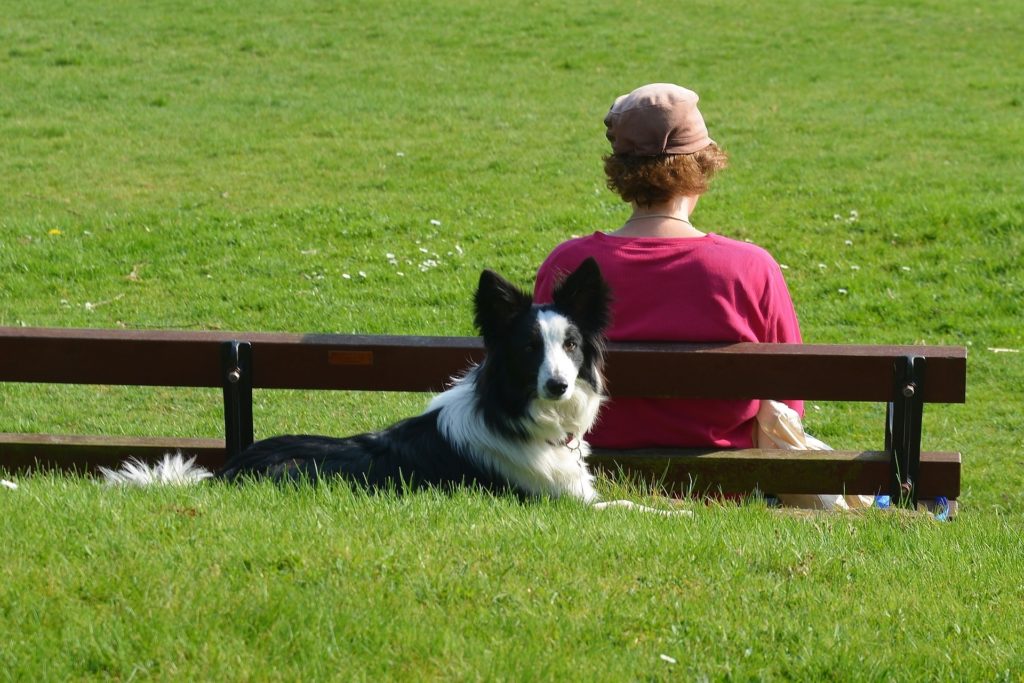
Nearly 40 million adults in America are dealing with some form of chronic anxiety¹. If you are one of them, you may have given consideration to getting a service dog for anxiety relief — especially if the way you’ve been feeling has prevented you from carrying out your normal daily activities. If you have been diagnosed with an anxiety disorder and your condition can benefit from having a service dog, here are some things you should know.
The difference between service dogs and emotional support animals
Service dogs can be trained to help relieve anxiety by responding appropriately when they detect it. A service dog differs from an emotional support animal in certain respects, one of which is the specialized training. Service dogs are also afforded legal protections that enable them to live with their owners in “no-pets” rental units. They can also accompany their owners in many “no pets allowed” establishments.
Only dogs can qualify as legally recognized service animals. Cats and other non-canine species fall into the category of emotional support animals, and may also be referred to as “ESAs” or “therapy animals.” ESAs do not require any training to fulfill their function. They also do not have all of the legal protections afforded to trained and registered service dogs.
How you can qualify for owning a service dog
A healthcare provider’s documentation stating that you have an anxiety-related disability or disorder is the first step. You’ll need documentation that shows you have a debilitating condition and that your healthcare provider believes you will benefit from a service dog. It’s generally best that your healthcare documentation comes from a psychiatrist or therapist rather than from a medical doctor or general practitioner.
Being ready to handle your part of the relationship
One of the basic qualifications for owning a service dog is being able to care for it. There are financial and physical commitments that you will need to fulfill. Give consideration to how your service dog will need to be cared for and how it will become an integral part of your life and family. Bear in mind that there are no “rainy-day exclusions” for walking a dog. An important part of the equation may be whether you have a stable home environment that can support a dog’s needs.
You should also “self-qualify yourself.” Can you handle the chance of being the center of attention when you’re out and about? Providing your condition represents a recognized disability or disorder, a service dog is legally allowable to accompany you indoors in a variety of public places, including many work environments. You may, however, find this to be an unexpected — or unwanted — conversation starter.
What you should be prepared for — costs and altered social interactions
For many individuals who are thinking about how to get a service dog for anxiety relief, the cost can be an up-front consideration. The initial outlay could be high; service dogs need to complete an extensive and costly training regimen. The initial cost for a trained service dog can exceed $5,000. You may need to look into a personal loan or some other form of funding if the cash is not available.
You should consider budgeting for the cost of your service dog’s upkeep. Depending on the dog’s size and weight, you could spend close to $2,000 a year on dog food alone. You will also need to be prepared to cover trips to the vet for vaccinations and the possible emergency visit.
It may be a good idea to be prepared to enter into unplanned discussions regarding why your canine partner is with you. What may have been a previously “invisible” condition may become quite visible, especially if you are the only individual allowed in a coffee shop with a dog.
There is also the possibility that bringing your service dog to work with you — although protected by law in many cases — may carry the potential to stir up some conflict. As long as your service dog is not unhygienic and remains well-behaved and housebroken, you should be able to keep a registered service dog with you in most places.
Breeds that can be better suited for anxiety relief — and two that may not
Some breeds that normally possess an excess of energy may not always be suited to helping their owners find relief from anxiety. Border collies and German shepherds, for example, have a high degree of intelligence, but their already excessive energy levels could cause them to become overly anxious themselves when they pick up on their owners’ stress levels. This could possibly develop into somewhat of a “feedback loop” that defeats the basic purpose of providing anxiety relief.
Two of the more popular choices for anxiety service dog breeds are Labrador and Golden retrievers. Poodles and Papillons have also been found to be well-suited to anxiety relief. Poodles are generally less affected by their owners’ stress levels. In the case of the Papillon breed, their small size can be a good choice for individuals who wish to avoid pairing up with a large- or medium-sized dog.
